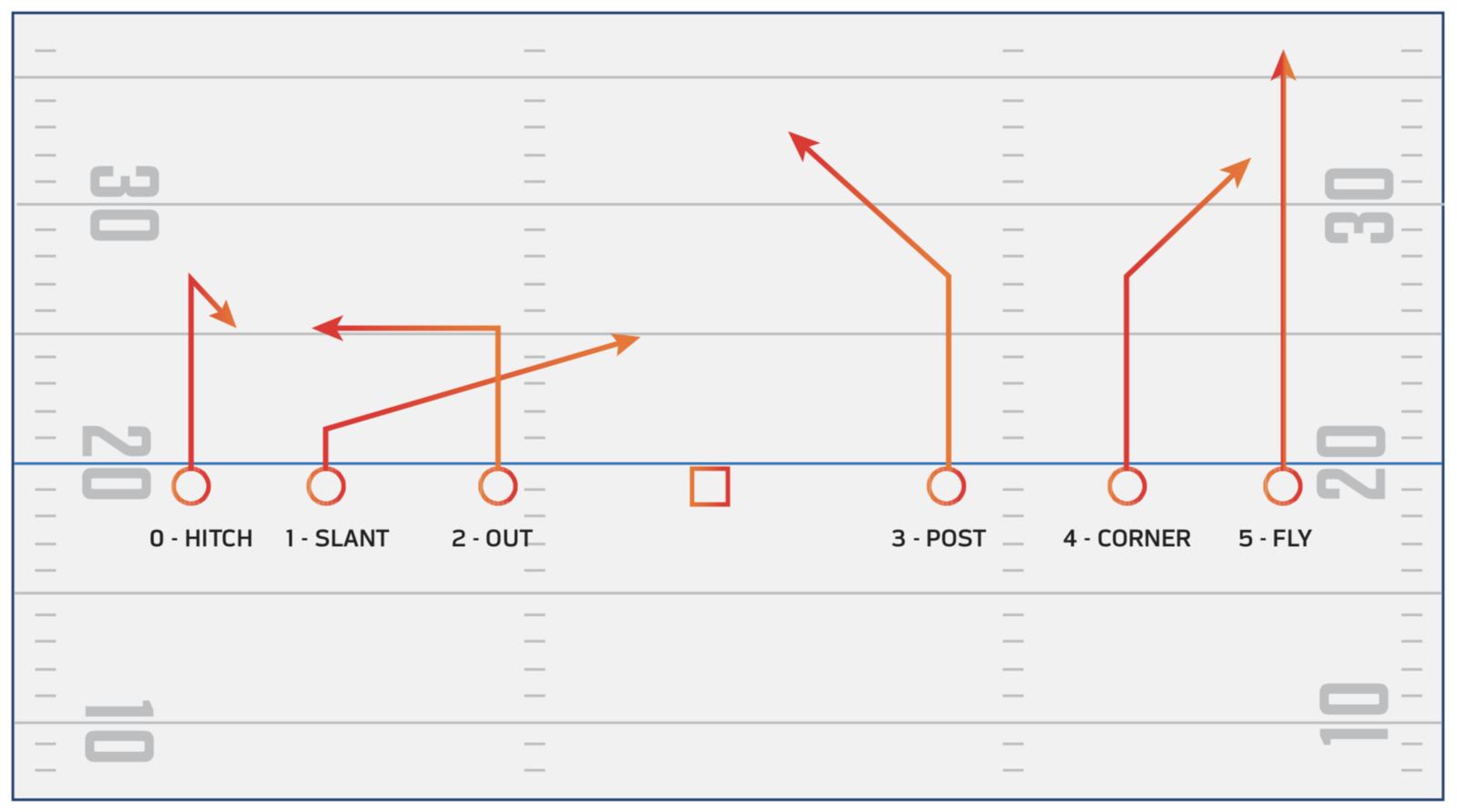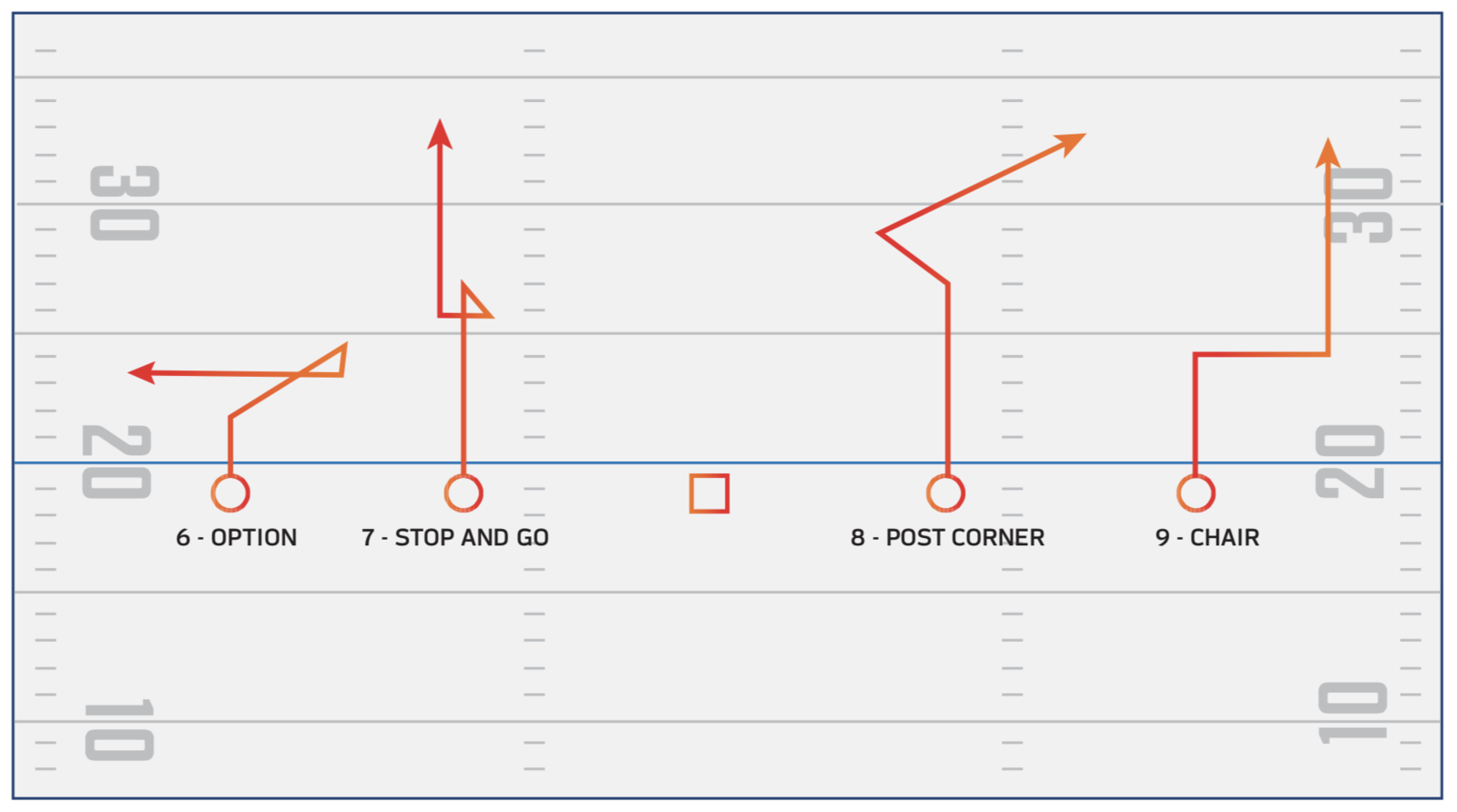To set up flag football teams for success, we put together a guide that prepares all levels of players. Whether this is your first season coaching, or you’re coming back for your tenth championship, our flag football plays and formations outline will provide a strong foundation for your team. In order for offensive players to properly run pass routes, they must understand the basics of flag football formations.
FOOTBALL FORMATIONS
What is a football formation? At the beginning of all offensive plays, players on the field must create an offensive formation at the line of scrimmage. Football formations give each player a specific place to line up to begin a play. This prevents players from running into each other and crowding on the field; and promotes safety.
Take a look at the offensive flag football plays below. Each circle or "O" represents an individual player, with the square representing the quarterback. An offensive formation is where all offensive players are located at the start of a play. The arrows reflect the plays, or routes, which provide an individualized map for each player in a formation.
FLAG FOOTBALL ROUTES
You want to score some touchdowns, right? Let’s dive into individual routes that will give you enough knowledge and context to create new, slick flag football plays of your own.
SIMPLE NFL FLAG ROUTES

This image showcases six different routes that can be used on offense in flag football.
Let’s walk through each player, from left to right. Note that all routes begin at the hike of the ball by the center.
0 - Hitch: In this hitch route, the player runs straight for seven yards, then quickly pivots backwards for a couple yards. This throws off defenders running backwards to guard the player, and opens them up to a quick pass from the quarterback.
1 - Slant: During a slant, the player should run forward a couple yards, then cut at a near 45-degree angle forward and in (towards the center of the field). This play becomes more effective when combined with 2 - Out (See below).
2 - Out: In an out play, the player should run forward for a designated yardage, five in this case, and then cut on a direct 90-degree angle out (toward the sideline).
Offensive football plays pro-tip: The combination of 1-Slant and 2-Out is a classic, effective technique. As the two players cross directions mid-route, their defensive counterparts are often unable to track and follow their designated target. This opens not one, but two players for a quick throw from the quarterback. Your first down awaits!
Offensive football plays safety pro-tip: When combining two football plays that cross each other, like slants and outs, make sure the players communicate who is going to run through the common space first (in other words, which player crosses in front). This prevents any collisions as the players complete their routes.
3 - Post: The player runs forward a designated distance, in this case seven yards, then cuts at a 45-degree angle to the center of the field.
Offensive football plays pro-tip: Having a hard time keeping all the types of routes straight? Easily remember ‘post’ routes by envisioning that you’re running towards the field goal post in the center of the field.
4 - Corner: This player proceeds straight for seven yards, then runs at a 45-degree angle out (toward the closer sideline). This route is optimal if you need the player to catch the ball and then step out of bounds to stop the clock during a nail-biting game.
5 - Fly: The fly is the easiest route in the book. Run straight—and fast! Give this route to the player who has some serious wheels (and hands) to gain lots of yardage. First down!
MORE COMPLICATED NFL FLAG ROUTES

Now let’s go over some more complicated routes showcased in the image above and walk through each individual player’s movement.
6 - Option: In this trick route, the player appears to begin a slant, heading toward the center of the field, but then cuts directly toward the sideline, running parallel to the line of scrimmage. This combines the slant and out routes.
7 - Stop and Go: This route is perfect for players who have a need for speed. First, they run straight about seven yards and then stop. Just when the designated defensive guard thinks they’re covered, the player takes off again up the sideline. Catch that ball and they’re home free. This combines the hitch and fly.
8 - Post Corner: This route mixes the magic of a post route with—you guessed it—a corner route. This player runs straight for seven yards, then runs the post route toward the center of the field. Once the defender commits to the post, the receiver runs the corner route.
9 - Chair: This player runs forward about four yards, then cuts parallel to the line of scrimmage toward the sideline, then cuts 90 degrees again and runs up the sideline. These two back-to-back cuts leave defensive guards in the dust. The chair combines the out and fly and is sometimes called an "out & up".
You can mix and match these routes to create your own custom flag football plays, which can be used not only in 5 on 5 youth flag football, but every league. They are even used in the NFL.